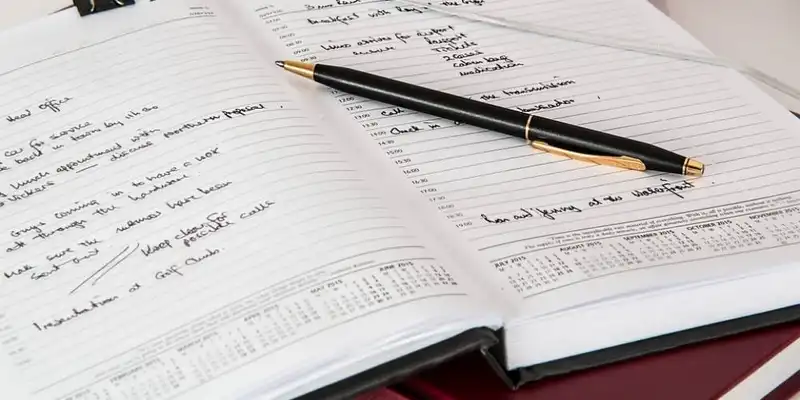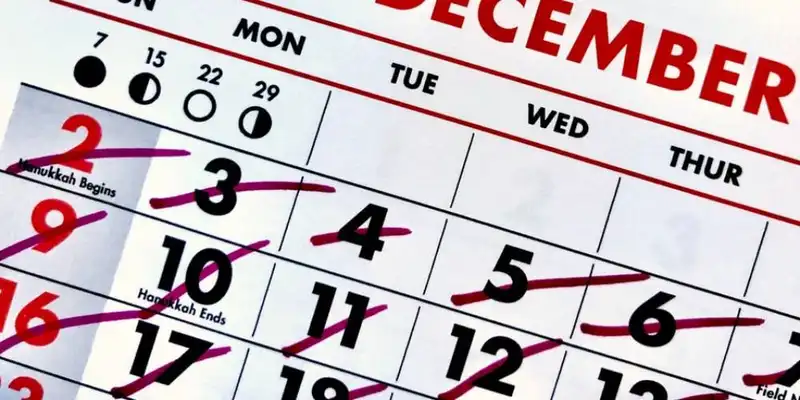5 Productive Time-Management Strategies to Keep You Motivated
Time-management is a tricky skill to perfect. For some, it comes naturally. For others, it takes a little more effort to figure out a routine. However, whichever side of the spectrum you fall on, you can master time-management. There is sure to be a trick that works for your daily routine. These 5 tips will make you a time-management pro in no time!
1 - Try a Daily Planner

Many people swear by traditional planners. This is for a good reason. The brain naturally retains information better when it is hand-written. In fact, it sucks it in like a vacuum while you are in the writing process. Sometimes, people combine digital and traditional planning methods.
It's a good idea to try both. Having a combination of places to organize your daily activities will encourage you to check-in. When you find a system that you're likely to look at every day, it's easier to check those boxes off your lists.
A traditional planner is a great way to see your tasks as a grand scheme. Many are organized to be monthly, yearly, and weekly within their layout. Also, color-coordination for specific categories is an added bonus.
2 - Write Various To-Do Lists
Having a general daily planner will give you an overview of what your day looks like. If you want to take this a step further, having more detailed to-do lists helps with categorization. The best way to do this is to detail all of your anticipated tasks for the day. Even if they seem mundane, writing everything down will make you more likely to remember them.
Allocating time slots for tasks is optional. People that do this see the value in having a general understanding of how long it may take to get something done. Also, writing a list is a productive task in its nature! Starting your day off this way makes you 25% more likely to check all of your tasks off.
3 - Prioritize Your List

Having a perfectly-organized list is a great place to start. Ideally, you'll jot everything down as you think of each task. The next step would be to prioritize them. Some people like to allocate specific time slots for various tasks. The Pareto Principle tells us that 20% of your efforts will produce 80% of your results. Knowing where to start makes this easier.
It's recommended to break more complex tasks down into smaller ones. Doing this makes large tasks feel less intimidating. When a big project feels like something you can do in smaller increments, it's easier to finish it in a timely manner.
Giving yourself micro-deadlines is almost like hitting a checkpoint in a video game. Stressing yourself out to get things done is never productive. Anything will look more daunting as a huge project.
4 - Use Different Tools
Similarly to the traditional vs digital planner debate, there are various tools that can help with your time-management. Whether you swear by a Smartphone, laptop, or tablet, there is an application to suit your needs.
As long as you have an updated operating system, there will be a digital organization tool for you. Google has several efficient tools that are available on both mobile and desktop platforms. For example, Google Sheets is very similar to Microsoft Excel. Creating a color-coded spreadsheet is an effective way to further develop your lists. It also creates yet another place for you to look at them.
The key thing is finding the most likely way you're going to check up on your lists and plans. Some people are aware that they are unlikely to look at a daily planner beyond when they initially write in it. Therefore, they stick solely with digital methods of organization.
Others are on the completely opposite side of the spectrum. The classic pen-and-paper approach has them feeling accountable. Either way, the idea is to be accountable for your time. It's worth it to use various tools almost experimentally and see what sticks.
5 - Organize Your Day

There are only 24 hours in each day. Nobody wants to spend all 24 of those hours working. Generally, the average person works for 8-12 hours on any given day. The 45-file system is designed to organize your time for 2 years. The first 31 files are designated for the average 31 days in a month.
Naturally, this is disregarding months like February that typically have 28. Twelve are leftover. These represent each month. The remaining two files represent the following two years.
Obviously, planning for two years at a time can be tricky. Things get in the way. However, having a general overview of what you want these next two years to look like allows you to see your big-picture goals.
This is a similar method of breaking your large tasks into micro-deadlines. It is more-so a guide for where you want to be two years from now. If you're a very routine person, this method can be more direct. Also, this works especially well if your job requires a lot of the same general tasks.
Finding the correct method that works for you can feel daunting. However, time is on your side! Technology provides ample opportunities to be the most productive version of yourself. Purchasing a planner is the first step.
With that, there are different layouts that benefit some people better than others. There are also courses available online that can detail these methods so the purchasing process becomes easier. It is an investment of your time, but one that will benefit you in the long run.
The best time to become a time-management pro is now. A new decade is upon us. This is a great opportunity to look at the big-picture. When you have a general idea of where you want to be, your day-to-day becomes easier to break down. Having a secure system helps you reach these goals quickly. It will amaze you just how quickly you begin to see results!
















































































